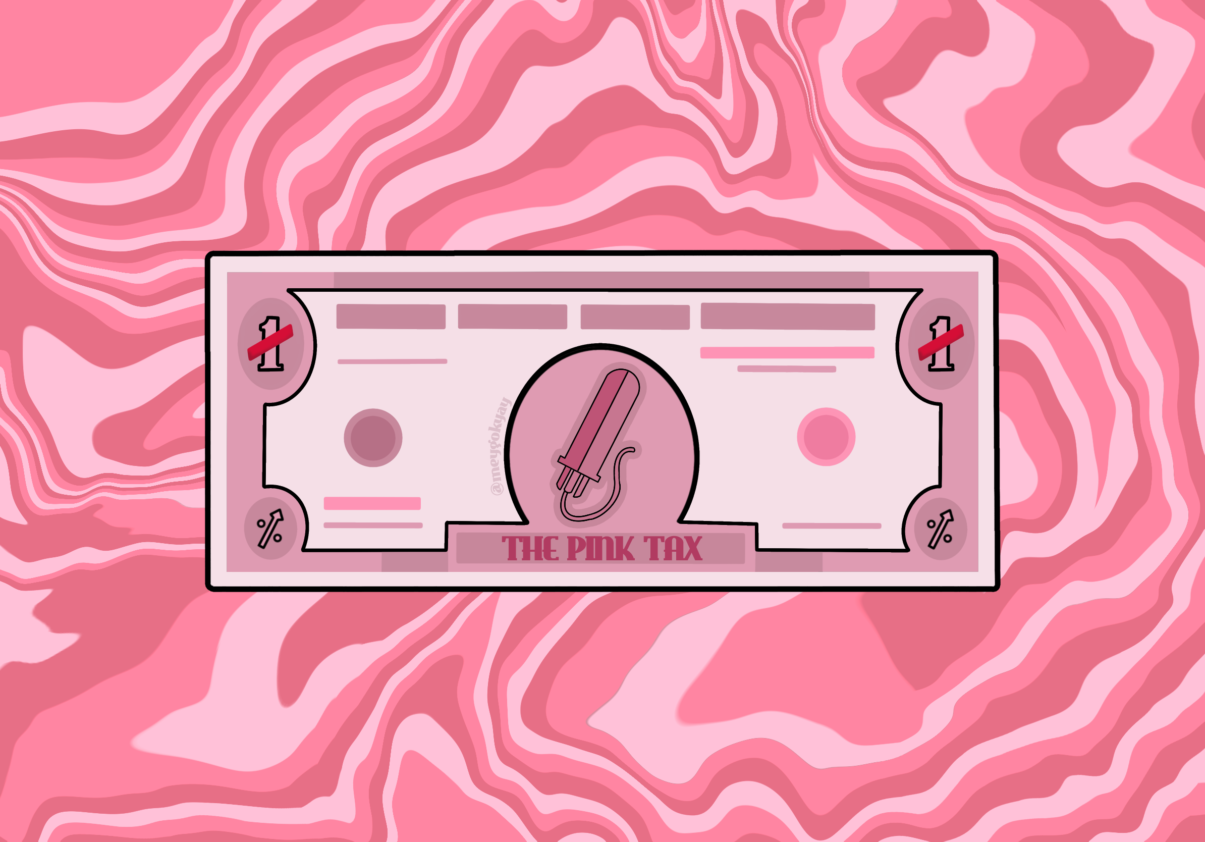The pink tax is a phenomenon often attributed as a form of gender-based price discrimination, with the name stemming from the observation that many of the affected products are pink.

WHAT IS THE PINK TAX?
The pink tax is the practice of charging more for products marketed toward women—which are frequently pink—than the same products sold to men. These products range from razors to body wash, toys, and more. The tax even comes up when talking about medical care/health in the US: high pricing for feminine products such as tampons and pads. These products are not readily available to women as they are seen as a privilege rather than a necessity. Women in homeless shelters often have to without these products in their times of need, having to supplement for self-made products.
CHILDREN’S TOYS AND CLOTHING:
The pink tax is already bad enough for grown women, why include it from such a young age, for children? Retailers are charging higher prices for clothes and toys marketed to young girls. Brands such as Abercrombie and Fitch charge 3 times higher for a basic logo t-shirt in the girl’s section. The t-shirts quality and prints are almost identical, but just as stated before, the item is priced at a higher point for the girl’s section; corporations say this is due to demand, but that does not change that they lie nearly at the same production cost. Another crucial example can be seen in children’s sports gear. Large groups such as Target sell the same children’s scooters for double the price for girls. Again, these products have no difference other than the color. Children’s toys are another category where the pink tax is prevalent. DCA compared bikes and scooters, general toys, backpacks, preschool toys, helmets, and pads as well as arts and crafts. On average, children’s toys and accessories cost 7 percent more for girls.
WOMENS HYGIENE PRODUCTS:
The Pink Tax is favorably in effect through the hygiene field. In the United States, while teaching sex ed, condoms are handed out for free. Simultaneously, sanitary products such as tampons and pads are either not present in public areas such as schools or are placed in dispensers so the user can pay to buy the product. While other medically necessary products, such as prescription drugs and neck braces, are exempt from state sales tax, 36 states still tax women’s menstrual products. It’s called the “tampon tax.” Basically, you get taxed for being a woman: Women have no choice but to buy these products, so the economic effect is only felt by women, and women of color are particularly hard hit by this tax. You can’t just ignore your period. It’s unjust to tax these products; women of color are deeply affected by the wage gap already, so not only are they making significantly less money than their male counterparts, they have to pay more for items that are a necessity. Women face continued socioeconomic barriers; despite feminine care products being one of the most requested items in homeless shelters, they are also among the least-donated.
Personal care products: Shampoo, conditioner, razors, lotion, deodorant, body wash, and shaving cream all fall under this category. Gillette, for instance, took heat over the fact that its women’s razors cost more than those for men. Some may argue that these products are highly different and should definitely cost more, or ‘why don’t you just not buy it?’: this argument is unjust. You see, you can’t blame the problem on women themselves; this idea of ‘feminine gearing’ products are drilled into our head from such a young age. Girls are supposed to like pink, girls are delicate, and so on. Products explicitly marketed toward women are generally more expensive than those marketed toward men, despite either gender’s choice to purchase either product. As a result, companies are making more margins on women’s products and services. The Pink Tax is another way every penny possible is being grabbed from consumers. They know that women can’t live without these items, and they decide to take advantage of the situation.
.
Women are generally willing to pay more for aesthetics, and these products aren’t exactly substituted for each other; they might smell different and work differently and have different active ingredients, so why don’t we just have unisex self-care products? Don’t get me wrong, I’m not saying that this issue doesn’t affect men too. Men are discouraged from consuming ‘feminine’ products. It’s viewed ‘un-masculine’ for men to be interested in skincare or self-care in general. Let’s dismantle the whole system altogether.
With the wage gap already being such a large issue, women should have higher access to these products, and our periods shouldn’t be such ‘taboo’ topics. It’s healthcare, not an optional fun activity. Feminine hygiene products shouldn’t be traded around like gold. Coming to general hygiene products, we should have a neutral point in the first place. Not only would this break the issue of women and male products, but it would help cut waste, product cost, and bring us a step closer to reaching gender equality.

ily mey im ur biggest fan 🙂